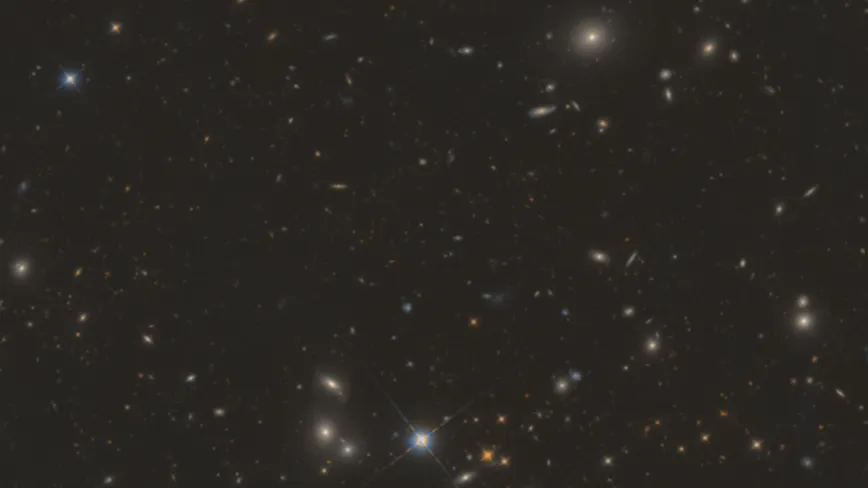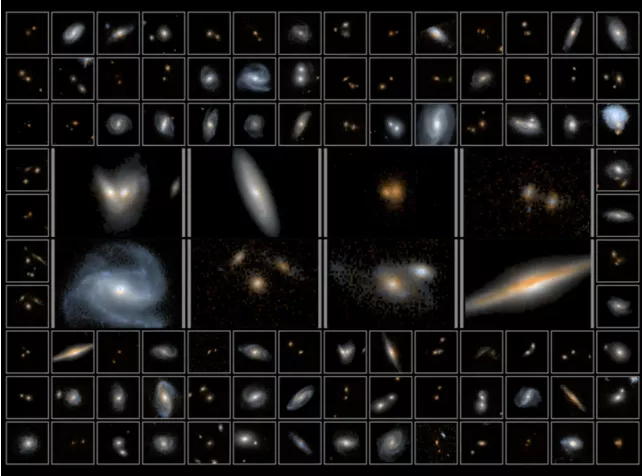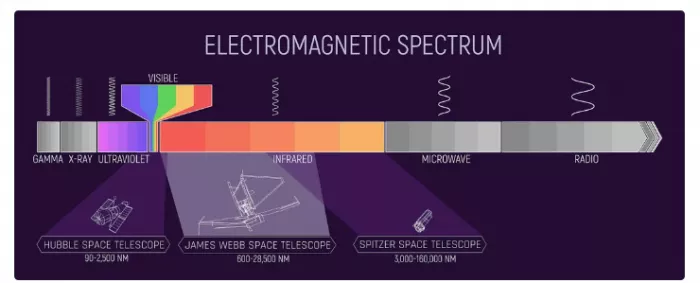According to CNET report, the Hubble Space Telescope has just captured the largest near-infrared image of the sky in history** This huge survey could pave the way for the discovery of the next generation of the James Webb Space Telescope (JWST) and ultimately help humans understand some of the most elusive regions of our universe.

Since its launch at the end of December last year, JWST has been carrying the hopes and dreams of scientists with broad horizons. It can penetrate Stardust and help us solve the long-standing mystery of black holes. But the time tested Hubble is still working hard. In fact, it has just reached a considerable milestone.
The Hubble Space Telescope, which entered the universe as early as 1990, has captured the largest near-infrared space image in its history, so it has even set foot in the field JWST is preparing to explore. This extraordinary image allows people to see some of the rarest celestial bodies in the universe, such as "monster" galaxies as the product of large-scale galaxy mergers or super "violent" black holes lurking in the depths of interstellar space.

Lamiya mowla said in a statement: "it is difficult to study these extremely rare events using existing images, which is the motivation for designing this large-scale investigation." Mowla, an astrophysicist at the University of Toronto and the lead author of the study, whose preprint can be found in arxiv Found on. It will soon be published in the Astrophysical Journal.
As part of a new high-resolution survey called 3D dash, which represents "drive and shift", Hubble's latest data set spans an area of the sky almost six times larger than the moon seen on earth. You can actually be here Explore it yourself. What you see is a mosaic of multiple Hubble photographs.
"Since its launch more than 30 years ago, the Hubble Space Telescope has led a renaissance in the study of how galaxies have changed in the last 10billion years of the universe," mowla said. "The 3d-dash project extends Hubble's legacy in wide area imaging, so we can begin to uncover galaxies beyond ourselves."
What is an infrared image?
When you look up at the sky, even if you are in the darkest forest canyon on earth, you will not see all the stars. This is not because some stars are not in your view. They are there -- but they are invisible.

Human eyes can only see the wavelength of light in a certain region of the electromagnetic spectrum. Outside this area is infrared light. And those very, very distant galaxies and stars emit this type of light -- so no matter how hard we try, they are basically hidden from our eyes.
However, Hubble and JWST also have ways to bypass our human limitations. The scientists embedded detectors that are basically infrared light in the two instruments.
This information map illustrates the spectrum of electromagnetic energy, highlighting the parts detected by NASA's Hubble, Spitzer and Weber space telescopes.
As can be seen from the figure, the infrared energy of JWST is much stronger -- that is why it is possible to show us a lot of things that our eyes can't see -- but Hubble does have some special light processing capabilities.
Moreover, Hubble actually has an advantage over JWST here. According to the researchers behind this new study, JWST is designed to take highly sensitive close-up images of deep space, so we can get very clear photos of small interstellar regions. This is incredible, because we may get pictures of distant stars, galaxies and other cosmic phenomena with a degree of clarity similar to that of our space objects near the earth.
However, Hubble can take very wide area images like the new photos we are looking at. Finally, this extensive data set can provide information for future JWST research and help the scope of the next generation point in the right direction to reveal observations.
As ivelina momcheva, a data scientist at the Max Planck Institute of astronomy and the main researcher of the study, said, "it gives us a glimpse of future scientific discoveries and enables us to develop new technologies to analyze these large data sets."